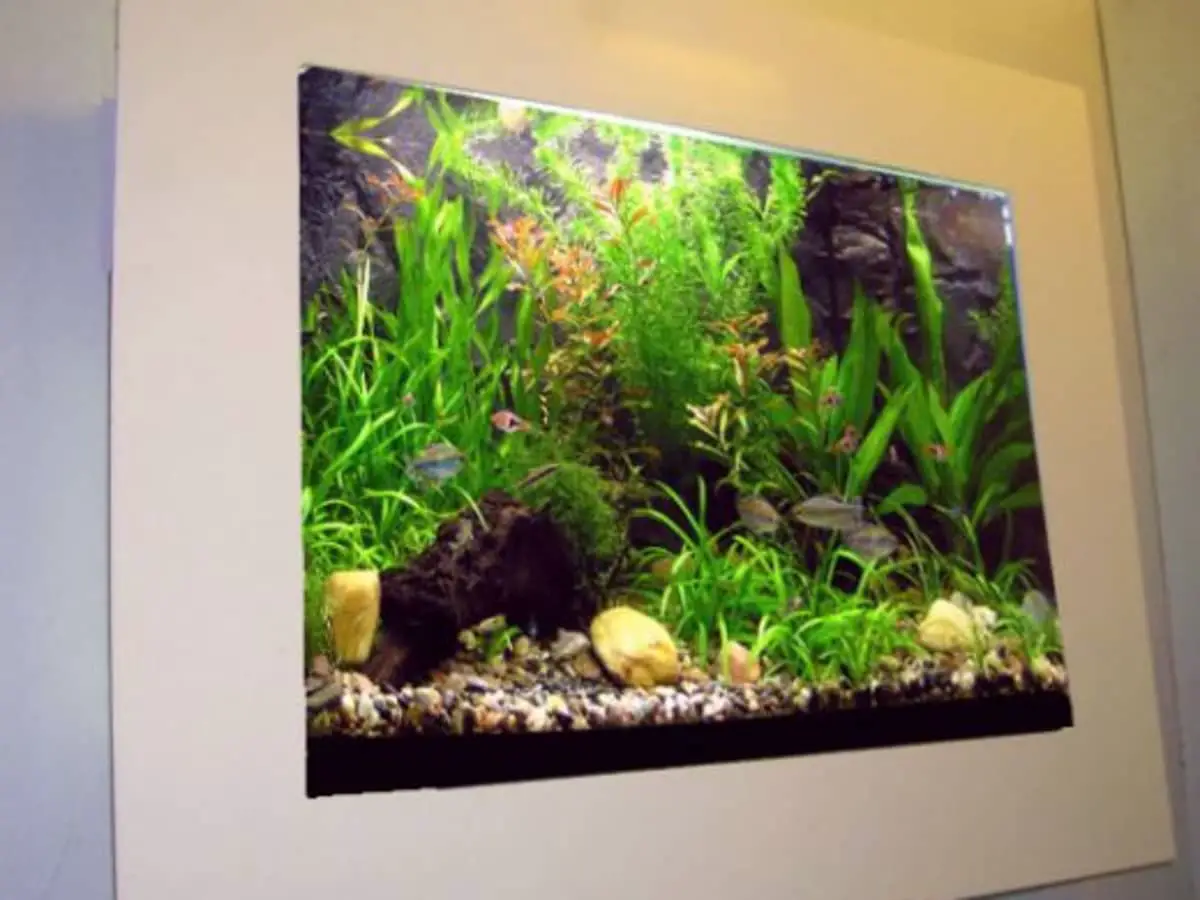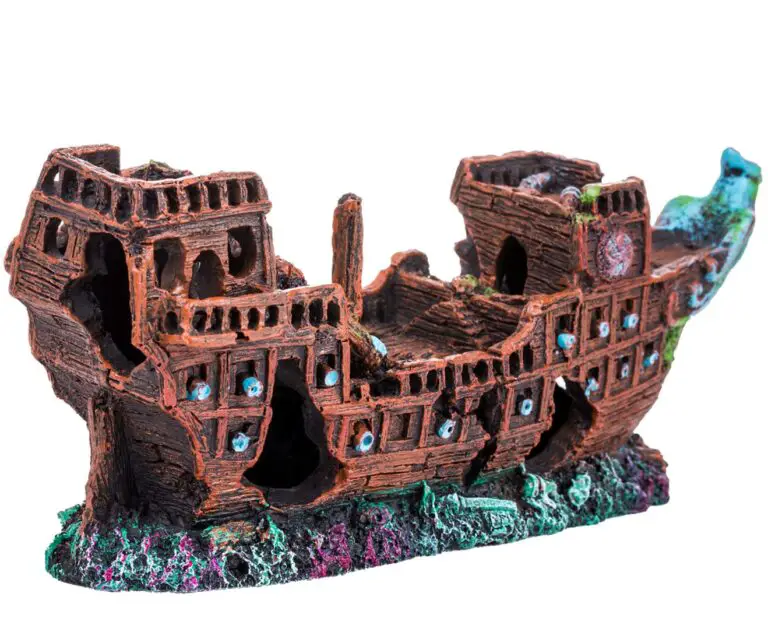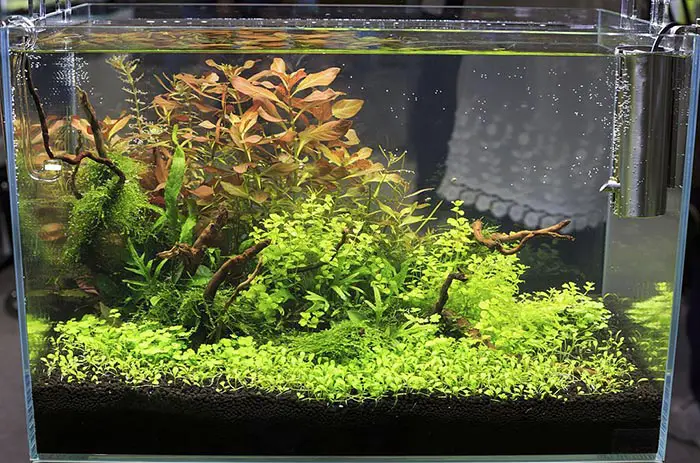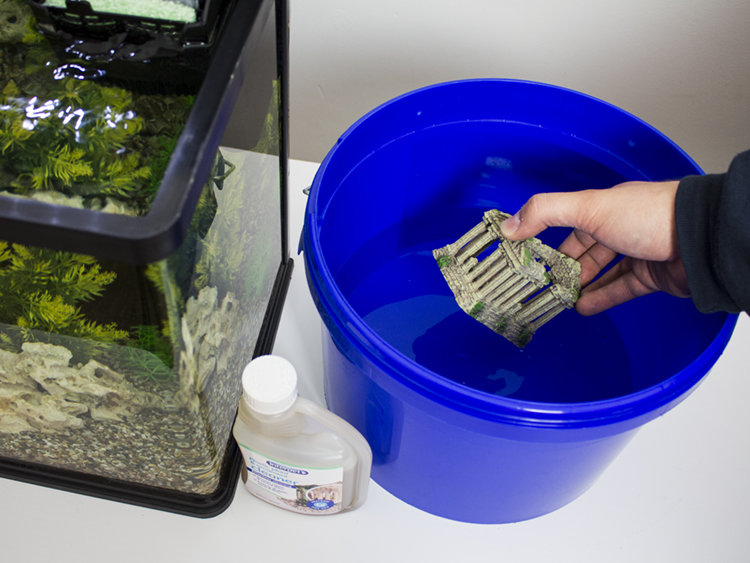How to Feed Fish in Wall Aquarium?
To feed your fish in a wall aquarium, it is important to first determine the type of fish you have and how much food they need. For instance, some types of fish require more frequent feeding compared to other species. Then, select the right kind of food for your fishes.
Freeze-dried foods are ideal if you’re dealing with smaller species while larger ones may prefer live or frozen prey such as brine shrimp or bloodworms.
When it comes time to feed them, use an automatic feeder if possible so that you don’t overfeed them and create water quality issues in your tank.
If you do choose to feed by hand, take out only what the fish can consume within five minutes time then remove any excess food from the tank afterwards.
Finally, be sure that all family members understand not to overfeed the aquarium inhabitants as this may cause health problems for them down the road!
- Step 1: Gather the Supplies – Before feeding your fish, it’s important to have all of the necessary supplies. You will need a small plastic cup and a net for scooping out any uneaten food from the aquarium
- Step 2: Prepare Food – Preparing fish food is essential to ensure that your fish get all of the nutrients they need. If you are using dry flakes or pellets, place them in a small bowl before adding them to the tank so you can measure out an appropriate amount for each feeding session
- Step 3: Place Food in Aquarium – Use your plastic cup or spoon to slowly add the prepared food into the aquarium near where most of your fish are swimming around. Make sure not to overfeed as this can lead to water contamination and may cause health problems with your fish
- Step 4: Observe Eating Habits – After releasing the food into the aquarium watch how quickly your fish eat it up! Depending on how much and what type of food you give them, they should finish eating within 5 minutes or less after introducing it into their habitat
- Step 5: Remove Uneaten Food – Once all of your fish seem satiated it’s time to remove any leftover pieces from inside their tank by using a netting device specifically designed for this purpose if possible. Be sure not leave uneaten bits floating around for too long as this can affect water quality negatively over time if left unchecked
Fish Tank in Wall Cost
The cost of installing a fish tank in the wall can vary depending on several factors, including size and complexity.
Generally, you can expect to spend anywhere from $500-$3000 for the whole setup. This includes labor costs for installation as well as materials such as aquariums, pumps, lighting fixtures and filtration systems.
Of course, if you choose higher-end products or custom designs your costs may be much higher than this range.
Fish Tank in Wall Diy
DIY enthusiasts can now bring a bit of the underwater world into their home by creating a fish tank in wall. This is an exciting project that requires basic carpentry skills, but it’s achievable with enough patience and dedication.
You’ll need to measure your space carefully and purchase waterproof materials such as acrylic or glass for the tank itself, along with supplies like silicone sealant and adhesive to construct the frame securely against your wall.
With some careful planning and effort, you’ll have an eye-catching feature in no time!
How to Feed Fish in Aquarium?
Feeding your fish in an aquarium is a simple process that should be done carefully. Start by purchasing high-quality food specifically designed for the type of fish you have, and use only as much as they can consume within two minutes.
When feeding your fish, drop the food slowly into different areas of the tank so all of them can feed equally.
Be sure to remove any uneaten food after those two minutes are up, as it will quickly decay and pollute your tank’s water if left in too long.
Clown Fish Aquarium
Clown Fish Aquariums are an exciting and rewarding way to bring a bit of the ocean into your home. They can be both fun and educational, providing you with hours of entertainment while also teaching you about marine life.
Clown Fish, in particular, are popular among aquarium enthusiasts because they are hardy fish that have bright colors like oranges and blues.
Clown Fish require minimal maintenance once established in their new environment. With proper care and attention, these beautiful fish will thrive for years to come.

How Does a Wall Fish Tank Work?
A wall fish tank is a unique way to bring an underwater scene into your home. It works by utilizing a special type of aquarium that’s designed to be mounted on the wall, rather than sitting on a stand or table.
Wall fish tanks typically come in either acrylic or glass and contain all the necessary filtration and aeration equipment needed for happy fish.
The tank itself will have pre-drilled holes which allow you to attach it securely to the wall with screws, clips or magnets depending on the model.
Once secure, simply fill up the tank with water then add your chosen substrate and decorations before introducing your new aquatic friends!
To keep everything running smoothly, regular maintenance should be carried out such as cleaning filters and changing water regularly; this helps ensure healthy living conditions for both plants and animals inside your stunning wall aquarium!
How Do You Maintain a Wall Fish Tank?
Maintaining a wall fish tank can be a rewarding experience. It is important to provide your fish with the best possible environment, and this includes making sure that their water remains clean and healthy.
To keep your wall fish tank in top condition you should perform regular maintenance such as changing the water on a weekly basis, removing any algae or debris from the walls of the tank, and testing the pH levels of the water every two weeks.
It is also important to feed your fish regularly with quality food products designed specifically for aquarium use.
Finally, make sure to check all filters regularly to ensure they are functioning properly so that your wall aquarium remains clear and free from harmful pollutants.
With proper care and maintenance you can enjoy watching your beautiful tropical fishes swim around happily without worrying about their health in an unhealthy environment!
How Do You Feed Fish in an Aquarium?
Feeding fish in an aquarium requires careful attention and consideration. When feeding your fish, it is important to feed them the right amount of food in order to avoid overfeeding or underfeeding.
To ensure that your aquarium inhabitants are receiving proper nutrition, you should provide a variety of foods.
A good starting point is a commercial fish food such as flakes or pellets specifically designed for aquariums.
Supplement this with fresh vegetables like lettuce, boiled peas and zucchini as well as live foods such as bloodworms, brine shrimp and earthworms on occasion.
Feed your fish small amounts at regular intervals throughout the day (about two times per day) rather than one large meal once daily; this will help prevent water quality issues due to uneaten food that can quickly lead to an unhealthy environment for your finned friends!
How Do You Feed Middle Dwelling Fish?
Feeding middle dwelling fish is a bit different than feeding other types of fish. These fish live in the mid-level region of an aquarium, meaning they don’t get much direct sunlight and thus require food that will sink down to their level.
The best type of food for these fish are sinking pellets or flakes specifically designed for bottom feeders, as well as high-protein frozen foods such as brine shrimp, bloodworms and daphnia.
Be sure to avoid overfeeding your mid-level dwellers, since doing so can cause water quality problems due to uneaten food particles remaining in the tank.
It’s important to vary their diet by providing them with different types of proteins from time to time; this helps keep their nutrition levels balanced while also keeping them interested in eating!
Conclusion
In conclusion, feeding your fish in a wall aquarium can be a fun and rewarding experience. Taking the time to properly research what type of food best suits the needs of your particular species is important for their health and well-being.
With proper care and regular feeding, you will soon enjoy watching your little swimmers thrive in their new environment!






